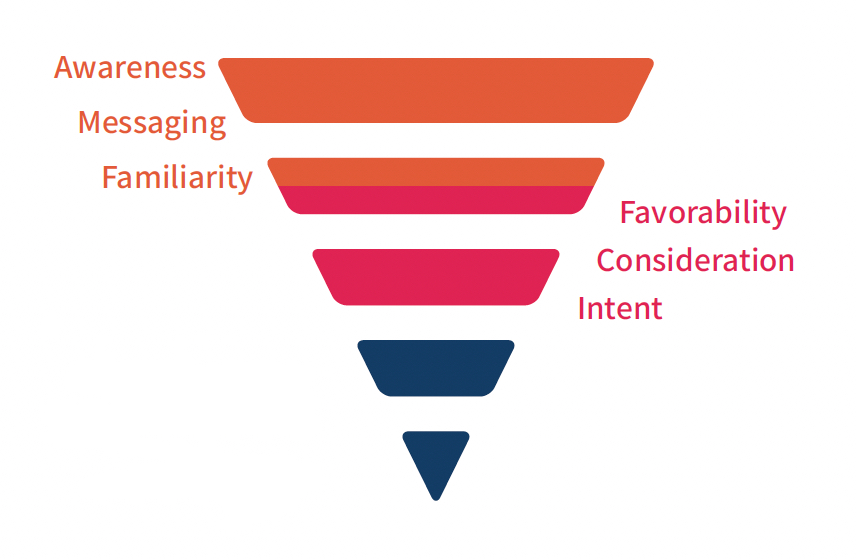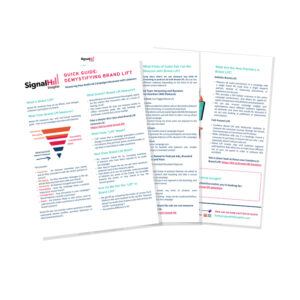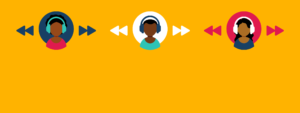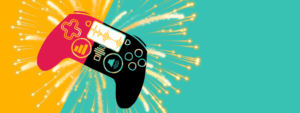Podcasts are renowned for breaking emerging brands, especially direct-to-consumer brands that discover how to leverage the medium’s unique strengths. Much of that success was built on performance tactics – so-called “lower funnel” objectives – optimizing for mostly online sales that are relatively easy to measure.
At the same time, brand campaigns with “upper funnel” objectives are the fastest growing segment of podcast ad spend, and many large and established brands focus their marketing here. It stands to ask, if sales are so important – and the ultimate desired outcome of so much advertising – why would there be an increasing focus on branding?
The fact is, branding is always a part of advertising. Simply put, a consumer needs to be aware of a brand before they can buy its products. What differs from campaign to campaign is where the emphasis, objective and measurement is. To better understand the increasing prominence of the upper funnel in podcast advertising, let’s take a closer look at this thing we call the “marketing funnel,” which is actually just a metaphor for a consumer’s journey with a brand.
The Funnel: a Framework for Marketing AND Measuring Effectiveness
A funnel is wide at top and gradually narrows down. Think of that top – the upper funnel – as an entrance. It’s the point at which consumers are first welcomed to the brand, becoming acquainted and more familiar. We typically call this “brand awareness.”
As this journey progresses consumers become more familiar with the brand, and may start to consider buying or using it. This is the point where the funnel begins to narrow. That’s because, inevitably, not every consumer continues onward.

Consider a ubiquitous global brand, like Coca-Cola. It’s hard to find someone who’s not at least aware of Coke. But fewer people may have a favorable opinion of it, and even fewer are considering picking one up the next time they’re at the store. Still, millions of people are buying a Coke every day, but the number represents a reduction from the whole set of folks who are aware of the brand. That’s why the funnel narrows as we get closer to the bottom of the funnel, when a purchase happens.
The purpose of the funnel metaphor is to have a framework for breaking this down into steps. In turn, these steps let us better plan a marketing strategy, and to measure advertising effectiveness at each stage.
Don’t Take the Upper Funnel for Granted
At the same time, a lot of advertising, especially digital, takes the upper funnel for granted, and skips right to lower funnel objectives, getting consumers to click, visit a website, and then make a purchase. Awareness and other upper funnel objectives are still embedded in the journey, but they get rushed through.
We see this in a lot of podcast advertising for direct response (DR) brands. Especially because many are emerging brands, most understand that they’re using podcasts to build awareness. But a lot less focus is put on those other upper funnel steps. Instead, it’s a quick jump to “go to fancynewproduct.com and enter promo code BAZINGA for 20% off your first order.”
There’s nothing fundamentally wrong with this strategy. It’s worked for dozens upon dozens of brands whose names have become nearly synonymous with podcast advertising. But there are limitations.
Conversions Don’t Tell You About Consumers Who Don’t Convert
A lot of DR success springs from a reliance on host-read ads, where the advertiser calls on the host’s savvy and relationship with the audience – and sometimes personal endorsement – to take care of that upper funnel work. The brand is in effect borrowing the awareness and favorability the host has built with their audience to take a shortcut to the bottom of the funnel. Again, this strategy has many demonstrated successes in terms of sales. Yet it’s hard to gauge whether the brand has built any upper funnel strength of its own from just counting these sales conversions.
Sales conversions only tell you about the consumers who’ve reached the lower part of the funnel. What about those who still aren’t really aware of the brand or when or why they would use your brand? Or folks who are aware but haven’t been moved to check out the website, let alone click “buy?” We don’t know why the messaging is missing the mark for them.
This becomes more significant as a brand needs to grow and mature. Plenty of DR brands dial in a formula where they can reliably grow sales at a known rate by consistently increasing reach – buying more ads on more podcasts. That works until reaching a plateau where more ads don’t generate the same increase in sales.
They’re reaching thousands or millions of podcast consumers who probably know the brand by name, but aren’t being enticed to convert. To understand why, shine a spotlight on the messaging and discover what stories, copy points and incentives are resonating with which audiences.
Even the Best Podcast Hosts Aren’t Psychic
It’s as true for host-reads as announcer-read or pre-produced ads. Even the most talented and tuned-in host is not psychic. While they may have a well-informed sense for what moves a segment of their audience, they can’t know or intuit what motivates everyone. Not without understanding what messages are working.
The objective for an upper funnel focus is clear: unlocking more sales from the reach a brand is already achieving.
Just as there is measurement for conversions, there’s a well-established and trusted method for measuring how a campaign, and individual ads, resonate with podcast listeners and viewers. Dig in to learn how brand lift measures podcasts’ upper funnel.
For those looking to grab a top-notch summary document around all things Brand Lift Study – look no further! Download our 3-page Quick Guide that helps demystify how brand lift works and how it can help you.





